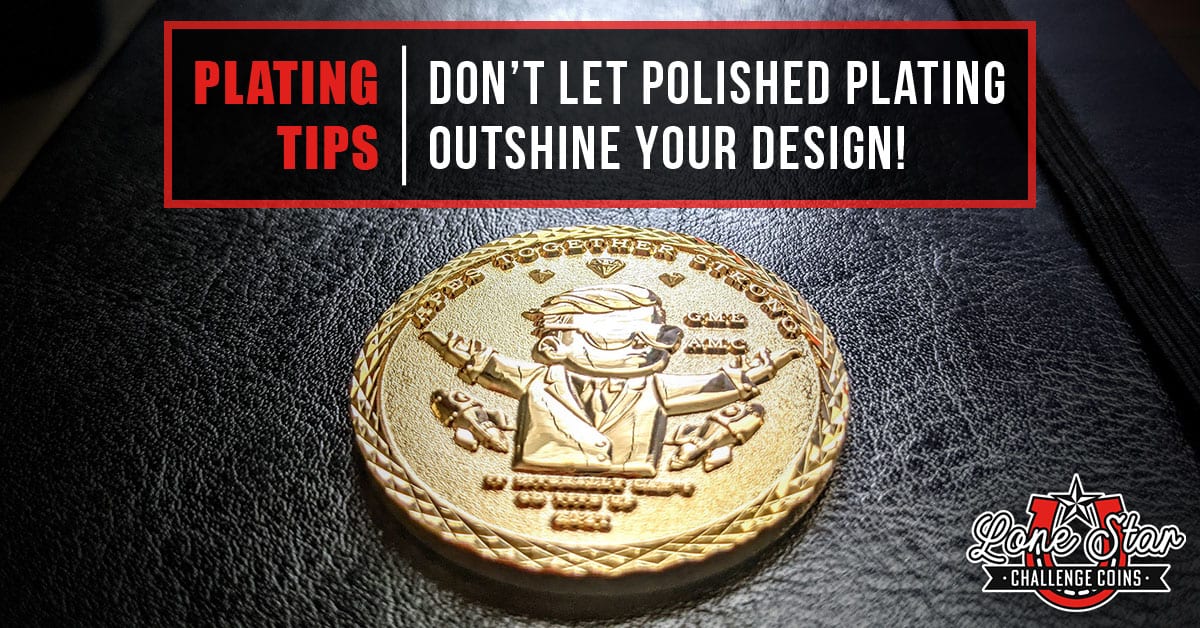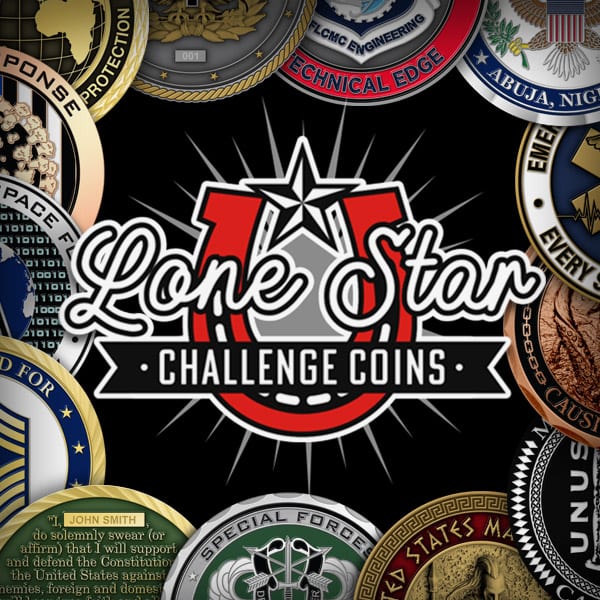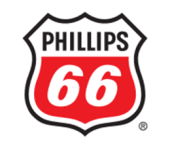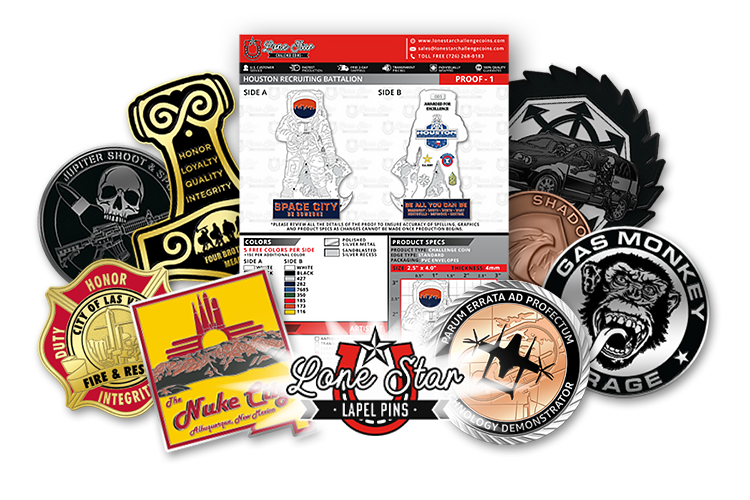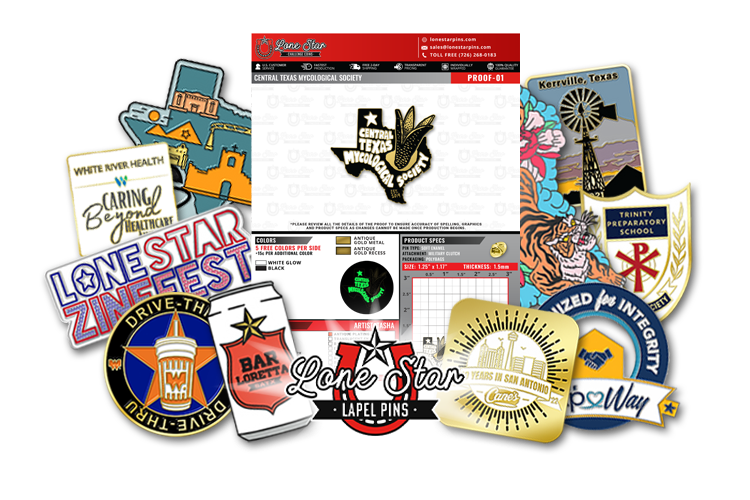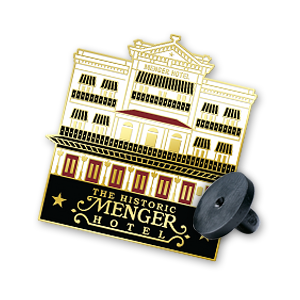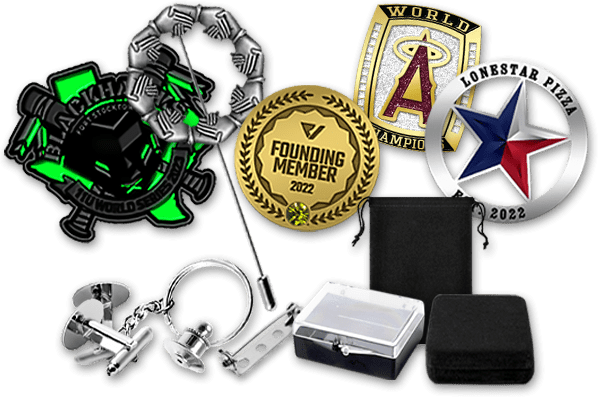Too Much of a Good Thing…
So you want to make a challenge coin, not just any challenge coin, the challenge coin! It will be comprised of nothing but shiny, highly polished gold so that it shimmers and shines like the sun on a hot August day. So much, in fact, that its radiance will attract the attention of anyone within a 50-foot radius! As you stand outside showing off your coin to some buddies, the light refracts off your gleaming gold coin directly into the corner of the eye of a passerby. He turns to see what could have reflected light at such a magnitude and approaches inquisitively to get a closer look. However, his face changes as you reveal to him the source of his curiosity, the glimmering marvel that is your challenge coin. Once wide with wonder, his eyes are now squinting feverishly, trying to discern the intricate detail hidden amongst the polished gold monotony. The moral of this story: “Too much of a good thing is not always better.”
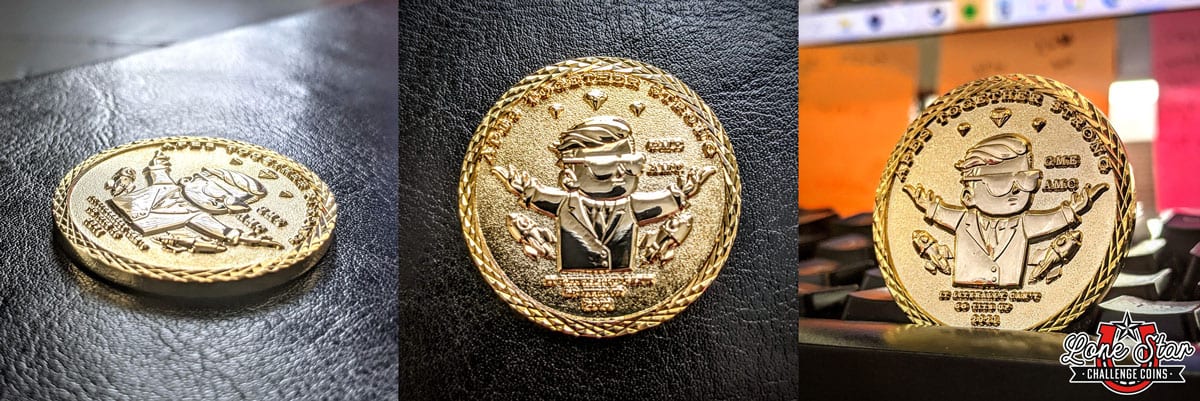
Why Adding Contrast to Your Challenge Coin Design is So Important
It was so hard for the passerby to see the detailing in the coin in the hypothetical story above because polished coins lack contrast. Contrast makes things easy to read, like black text on a white background. There’s a reason people still don’t make websites like they did back in the 90’s. Aside from being hideous and nauseating, the bright-colored text on bright-colored backgrounds provided no contrast. If you witnessed the early websites birthed by the invention of the World Wide Web, you know they were tough to read. Unfortunately, challenge coins are no exception to this rule. So, if you want your coins to be legible and the detail to stand out, you must add some contrast!
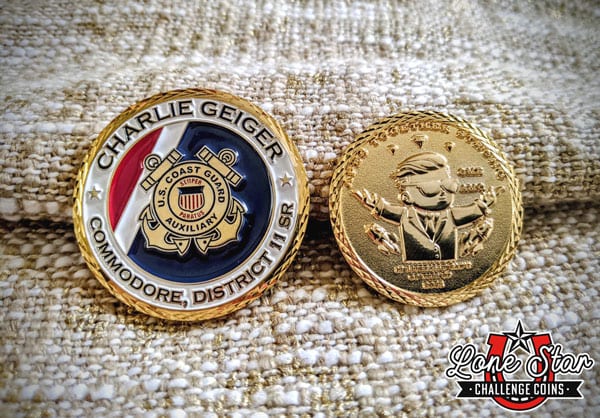
Ways to Add Contrast to Your Design
Two ways to add contrast to your challenge coin design are colored enamel and antiqued finishes. Colored enamel is the most common as it is the cheapest of the two options, and most people want to add color to their coins anyway. When choosing a lighter-colored plating such as polished gold, silver, or copper, you want to use darker colors, which contrast nicely with the bright-colored plating. Inversely, you will want to use lighter colors when choosing dark-colored platings, such as black nickel or black metal. Dark colors like navy blue and maroon tend to get lost and don’t stand out well when paired with dark metal finishes.
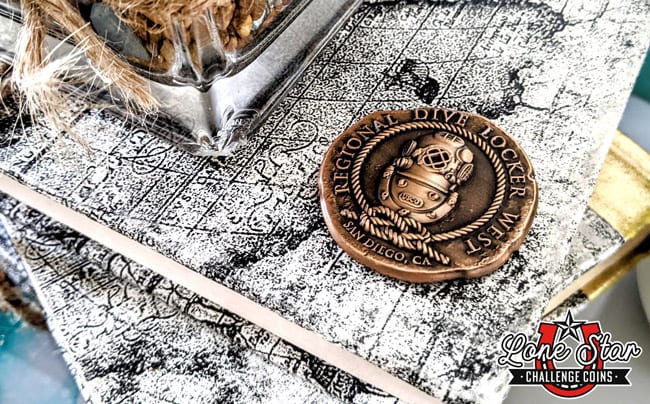
How Antique Plating Improves Contrast and Legibility
The second way to add contrast to your coin is by adding an antique plating. Antique plating is a wonderful option because it doesn’t just add contrast to your coin. It also makes your coins look as though they’ve been around the block a few times, and this adds character. The worn, vintage look of the antique challenge coin not only gives it a rustic appeal but also increases legibility and makes the detail in the coin really pop.

Keeping Your Design in Mind
There’s never a one-fit-all solution when deciding how to add contrast to your coin. So, when deciding whether you want to do so by adding colored enamel, antique plating, or a mixture of both, we recommend always keeping your design in mind. Here are a few questions to consider when choosing which option is best for your design:
1) Do you want color? If so, then how much? If you want a lot of color covering most of your coin’s surface, it might be better to choose a polished plating. This is because most of the antique plating effect (that gives your coin such a cool look) will be covered up by enamel coloring.
2) Are the majority of our design colors light or dark? If the colors are primarily dark, they will add great contrast to more lightweight colored platings such as polished gold, silver, or copper. However, if you’re using many lighter colors such as white, sky blue, or bright yellow, we recommend using darker platings such as black nickel or black metal. Even antique platings pair well with light-colored enamels.
3) Is legibility and detail a big concern of yours? If the answer is no, and you really want a solid polished gold, silver, copper, or whatever plated coin, then do it! The solid, shiny gold coin we used as an example in our article is beautiful and exactly what the person who commissioned the design wanted.

In Conclusion
Polished platings are not just an economical option; they look fantastic! However, as with everything else, too much of a good thing is usually bad. Without colored enamel or antique plating to help contrast the raised and recessed portions of the challenge coin, there is no contrast, and things such as wording and detail become challenging to discern. To help add contrast and make your design pop, you can add colored enamel or antique plating to your challenge coin. Some people may want a solid polished gold, silver, copper, or whatever plated coin, and that’s fine! As it fits the purpose of his design well, the solid polished gold coin example we used in our article is precisely what the person who commissioned the design wanted. However, keep in mind that we are always here to help if you cannot decide which option would best suit your project design. Simply call or email us, and one of our sales team members will be happy to lend their expert opinion.


